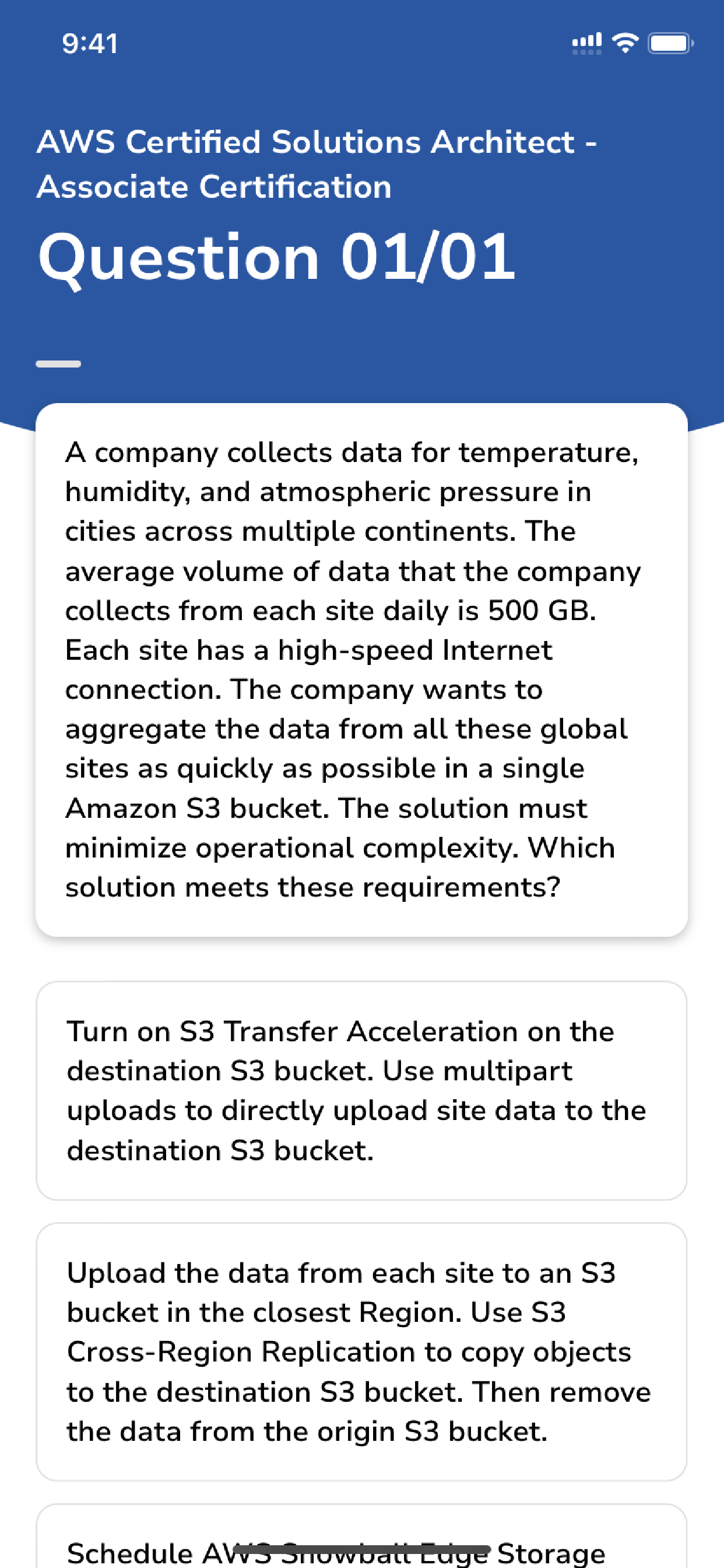AWS Certified Solutions Architect Associate Certification
Question 1
A company wants to reduce costs for its three-tier web architecture on Amazon EC2. The EC2 instances run 24/7 in production and 8 hours daily in development and testing, with an average of 30% CPU utilization during peak hours. What is the most cost-effective EC2 instance purchasing strategy?
A. Use Spot Instances for production and Reserved Instances for development and testing.
B. Use Reserved Instances for production and On-Demand Instances for development and testing.
C. Use Spot blocks for production and Reserved Instances for development and testing.
D. Use On-Demand Instances for production and Spot blocks for development and testing.
Question 2
A company hosts a website using AWS services. The website is behind an Application Load Balancer (ALB) that separately handles HTTP and HTTPS traffic. The company wants to ensure that all requests to the website are automatically forwarded to HTTPS. What is the most appropriate action for a solutions architect to take?
A. Update the ALB’s network access control list (ACL) to only permit HTTPS traffic.
B. Create a rule that rewrites the URL to replace HTTP with HTTPS.
C. Implement a listener rule on the ALB to redirect HTTP requests to HTTPS.
D. Replace the ALB with a Network Load Balancer (NLB) configured with Server Name Indication (SNI).
Question 3
A company operates a multi-tier web application on-premises. The application, which is containerized, runs on multiple Linux hosts and uses a PostgreSQL database for storing user records. The company is facing challenges with infrastructure management and capacity planning, which is affecting its growth. What steps should a solutions architect take to enhance the application’s infrastructure? (Choose two.)
A. Migrate the PostgreSQL database to Amazon Aurora.
B. Host the web application on Amazon EC2 instances.
C. Implement an Amazon CloudFront distribution to deliver the web application content.
D. Deploy Amazon ElastiCache between the web application and the PostgreSQL database.
E. Move the web application to AWS Fargate with Amazon Elastic Container Service (Amazon ECS).
Question 4
A company needs to create a scalable key management infrastructure to support developers who are encrypting data in their applications. What should the solutions architect recommend to reduce operational overhead?
A. Deploy the application in a single AWS Region and use Amazon CloudFront to deliver all static and dynamic content, with the ALB as the origin.
B. Deploy the application in two AWS Regions and use Amazon Route 53 latency-based routing to serve content from the ALB closest to the user.
C. Deploy the application in a single AWS Region, use CloudFront for static content, and serve dynamic content directly from the ALB.
D. Deploy the application in two AWS Regions and use Route 53 geolocation-based routing to serve content from the nearest ALB.
Question 5
A company needs to track its AWS expenses for financial review. The cloud operations team is planning an architecture in the AWS Organizations management account to analyze AWS Cost and Usage Reports across all member accounts. The analysis needs to be performed monthly. What is the most scalable and cost-effective solution to meet these needs?
A. Enable Cost and Usage Reports in the management account and deliver them to Amazon Kinesis. Use Amazon EMR to analyze the data.
B. Enable Cost and Usage Reports in the management account and deliver the reports to Amazon S3. Use Amazon Athena for analysis.
C. Enable Cost and Usage Reports for each member account and deliver them to Amazon S3. Use Amazon Redshift for analysis.
D. Enable Cost and Usage Reports for each member account and deliver them to Amazon Kinesis. Use Amazon QuickSight for analysis.
Congratulations on completing the exam!
Download DoPaper for extra free questions.
About DoPaper
The ultimate app for mastering exams


We Believe that Practice makes Perfect
Spend some time each day practicing with DoPaper, and watch your career grow.
